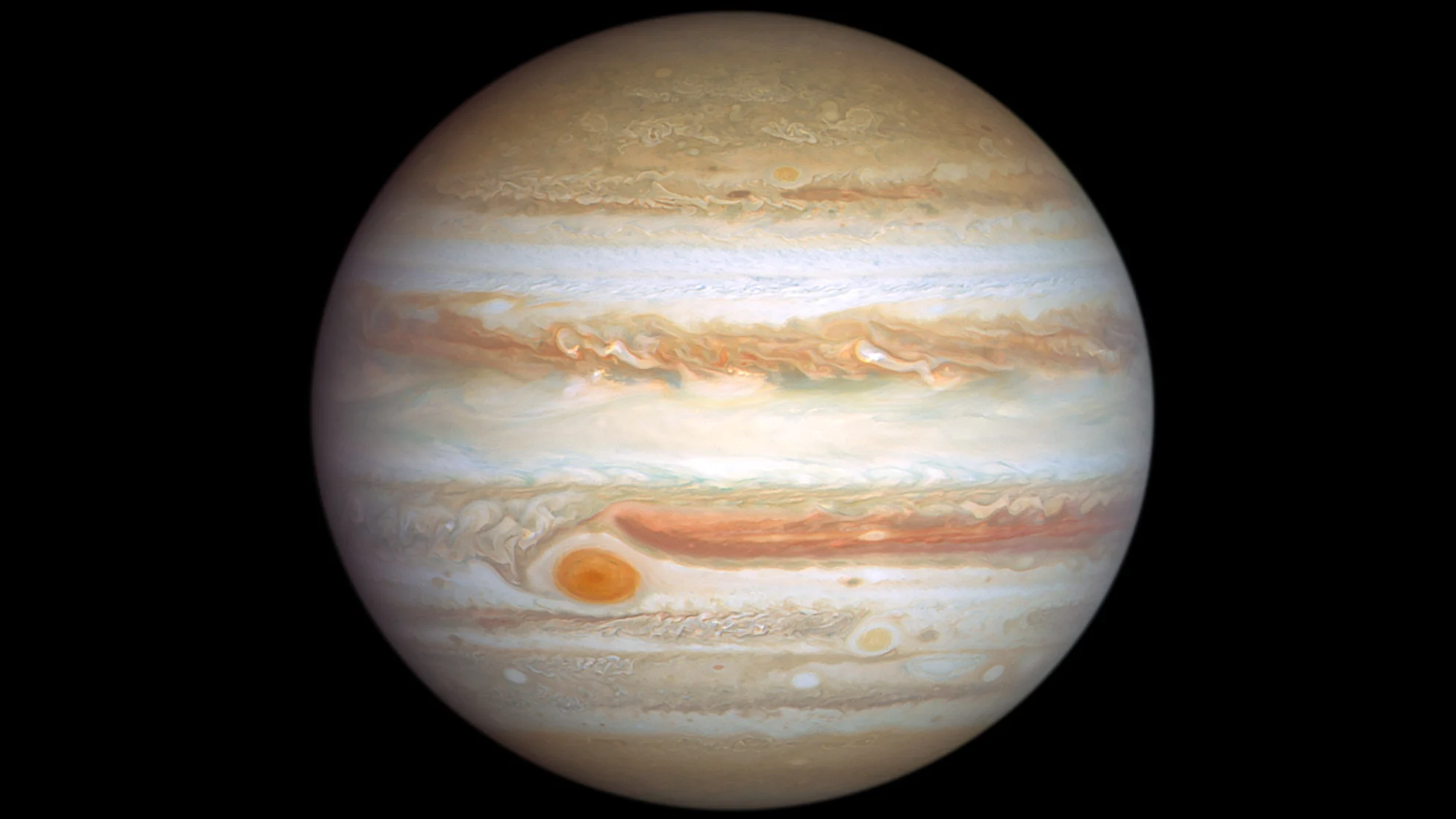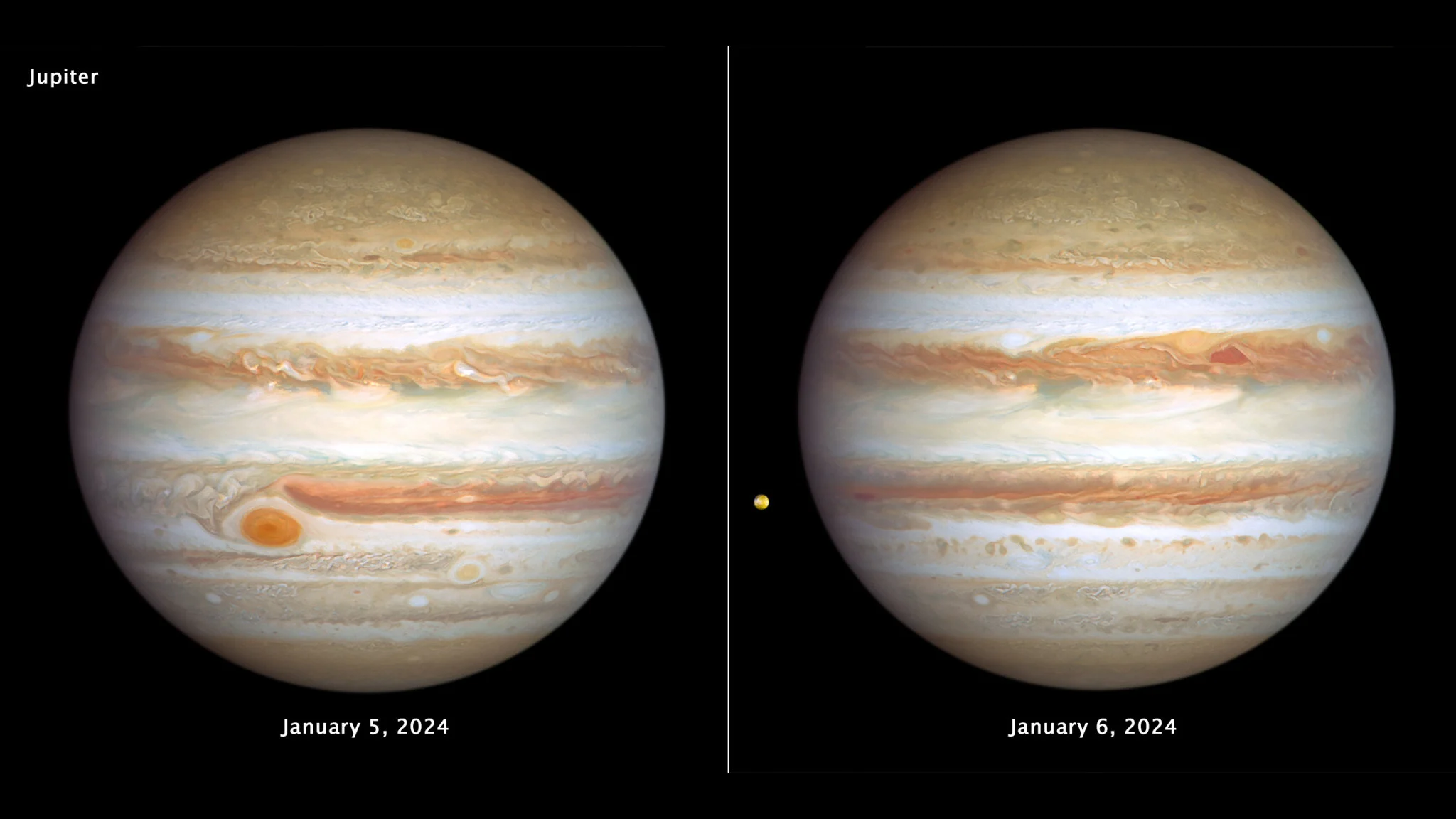
Stormy Jupiter featured in new images from Hubble Space Telescope
Jupiter's kaleidoscope of ever-changing weather patterns is on full display in new Hubble views.
Giant Jupiter is one of the stormiest places we know about, and its never-ending display of extreme weather is featured in new images taken by the Hubble Space Telescope.
Although there is plenty for Hubble to be looking at beyond the confines of our solar system, astronomers use the space telescope every year to check in on things in our backyard. This is part of a NASA program called OPAL, or Outer Planet Atmospheres Legacy, which collects images from Jupiter, Saturn, Uranus, and Neptune, watching for changes in the weather patterns of these immense planets.
The goal of the OPAL program is to further our knowledge of how the atmospheres of gas giants and ice giants behave over long periods of time. Observing the bands of Jupiter from year to year, as well as changes to weather systems like the Great Red Spot, provide us with clues to the inner workings of the planet.
"The many large storms and small white clouds are a hallmark of a lot of activity going on in Jupiter's atmosphere right now," Amy Simon, the OPAL project lead at NASA's Goddard Space Flight Center, said in a Hubblesite press release.
Additionally, what we learn about the weather systems on planets like Jupiter can help us further our understanding of Earth's weather patterns. It can also provide solid data to draw upon when we speculate about the weather on exoplanets orbiting other stars.

NASA's Hubble Space Telescope imaged both sides of the giant planet, Jupiter, on January 5-6, 2024. Credit: NASA, ESA, STScI, Amy Simon (NASA-GSFC)
"Big enough to swallow Earth, the classic Great Red Spot stands out prominently in Jupiter's atmosphere," NASA said, referencing the left-hand frame in the above image. "To its lower right, at a more southerly latitude, is a feature sometimes dubbed Red Spot Jr. This anticyclone was the result of storms merging in 1998 and 2000, and it first appeared red in 2006 before returning to a pale beige in subsequent years. This year it is somewhat redder again. The source of the red coloration is unknown but may involve a range of chemical compounds: sulfur, phosphorus, or organic material. Staying in their lanes, but moving in opposite directions, Red Spot Jr. passes the Great Red Spot about every two years. Another small red anticyclone appears in the far north."
"Storm activity also appears in the opposite hemisphere," the space agency explained, referring to the right-hand frame above. "A pair of storms, a deep red cyclone and a reddish anticyclone, appear next to each other at right of center. They look so red that, at first glance, it looks like Jupiter skinned a knee. These storms are rotating in opposite directions, indicating an alternating pattern of high- and low-pressure systems. For the cyclone, there's an upwelling on the edges with clouds descending in the middle, causing a clearing in the atmospheric haze."
Also visible in the frame from January 6 is Io, the closest of the Galilean moons to the planet. Despite being only slightly larger than Earth's Moon, Io is the most volcanically active object in the solar system.
"Hubble's sensitivity to blue and violet wavelengths clearly reveals interesting surface features," NASA says. "In 1979 NASA's Voyager 1 spacecraft discovered Io's pizza-like appearance and volcanism, to the surprise of planetary scientists because it is such a small moon. Hubble picked up where Voyager left off by keeping an eye on restless Io year by year."
Hubble isn't alone in its observations of Io, though. Just days before the space telescope snapped these new images, NASA's Juno spacecraft made a close flyby past the moon's pockmarked surface, returning the closest pictures taken of it in 20 years.











